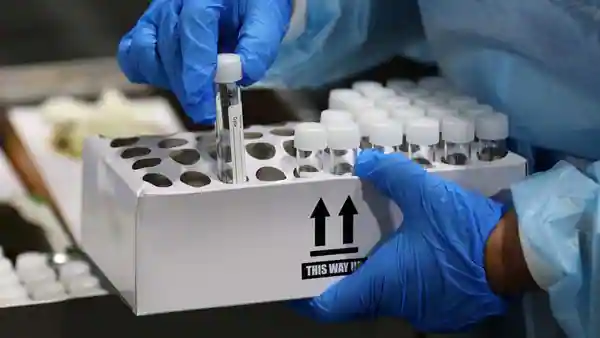
[ad_1]
NEW DELHI :
Scientists have found the therapeutic potential of an unusual class of immune proteins: miniature antibodies derived from llamas, called nanobodies against several coronavirus variants, including Delta and Omicron.
The researchers from Seattle university hope that a nanobody combination could be developed into a covid treatment that is effective against both current and future variants. The research holds important for India as India second wave of infections was driven by delta while the country has already reported over two dozen cases of omicron variant
Michael P. Rout and Brian T. Chait and their colleagues at the Seattle Children’s Research Institute USA selected a repertoire of over one hundred nanobodies based on their potency and ability to target different parts of the SARS-CoV-2 spike protein.
Produced by immunized llamas, the nanobodies were shown to neutralize the original coronavirus and several of its variants, including Delta, with high efficacy in lab tests. Studies to assess their potency against the new Omicron variant are underway, the scientists said. The findings are published in the peer reviewed journal eLife.
“Based on the way our nanobodies bind to the virus, we are hopeful that many will remain effective, perhaps even against Omicron. We should have those results soon,” Rout said.
The scientists explained that the human antibody is a chunky formation of two protein chains. But llamas, camels, and other species of the Camelidae family make antibodies consisting of only one protein.
To obtain the nanobodies, the researchers took blood samples from llamas who had received small doses of coronavirus proteins similar to a vaccine. They then sequenced the DNA corresponding to diverse nanobodies produced by the llamas’ immune system and expressed these genes in bacteria to produce large amounts of the nanobodies for lab analysis. Nanobodies that showed desired properties were then selected and further tested to identify those most capable of neutralizing the virus.
The scientists further explained that how the small size of nanobodies allows them to access hard-to-reach spots on the SARS-CoV-2 virus that larger antibodies may be unable to access. It also allows researchers to combine nanobodies capable of hitting different parts of the virus, minimizing its chances of escape.
“One of the most amazing things we observed with the nanobodies is that they show extraordinary synergy. The combined effect is much greater than the sum of its parts,” said Chait.
Besides being small and nimble, nanobodies are also inexpensive to mass-produce in yeast or bacteria. Moreover, the scientists said, they are remarkably stable. The ability of these molecules to withstand high temperatures and long storage times means that they could be developed into a drug accessible in various settings worldwide, said the researchers.
While scientists across the world have been looking for therapeutic treatments, vaccines and oral medicines to tackle the emerging variants of coronavirus, India reported 8,439 fresh coronavirus cases in the last 24 hours. The country’s cumulative covid-19 vaccination breached 130 crores on Wednesday.
Never miss a story! Stay connected and informed with Mint.
Download
our App Now!!
[ad_2]